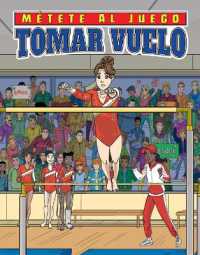- ホーム
- > 洋書
- > 英文書
- > History / World
Full Description
In the nineteenth century, the search for the artistic, architectural and written monuments promoted by the French State with the aim to build a unified nation transcending regional specificities, also fostered the development of local or regional identitary consciousness. In Roussillon, this distinctive consciousness relied on a basically cultural concept of nation epitomised mainly by the Catalan language - Roussillon being composed of Catalan counties annexed to France in 1659. In The Antiquarians of the Nation, Francesca Zantedeschi explores how the works of Roussillon's archaeologists and philologists, who retrieved and enhanced the Catalan specificities of the region, contributed to the early stages of a 'national' (Catalan) cultural revival, and galvanised the implicit debate between (French) national history and incipient regional studies.
Contents
Acknowledgements
List of Maps and Figures
Introduction
Part 1: Monuments
1 Tailoring the Repertoire of the French Nation
1 The Revolutionary Vandalism and the Preservation of National Heritage
1.1 The Raising Awareness of the 'national heritage' and Its Enhancement
1.2 The Preservation of National Heritage: The Creation of Museums
2 Searching for Ancestors: the Enthusiasm for the Middle Ages
2.1 The Romanists-Germanists Debate
3 Early Nineteenth-Century Celticism and the Celtic Origins of France
3.1 The Académie Celtique and the Beginnings of French Ethnology
3.2 The Celtophile Trend in Literature
4 Rewriting the History of the French People(s)
5 Governing the Historical and Documental Heritage
5.1 The Commission des Monuments Historiques
2Antiquarians and Archaeologists: The Retreival of Monuments in Roussillon
1 From Antiquarianism to Archaeology
2 Initial Attempts to Preserve National Monuments in Roussillon
2.1 The Enquête pour la recherche des antiquités
2.2 The Results of the Survey in the Pyrénées-Orientales Department
3 Travelling in and Discovering Medieval France
3.1 The Promotion of Romanesque Monuments
3.2 Mérimée's Journey to Roussillon
4 Institutionalising Archaeology in Roussillon
4.1 Searching for Celtic Monuments
5 The Early rearrangements of the CTHS
5.1 The Revue des Société savantes Replaced the Bulletin
6 The Sociétés Savantes and the Recovery of Roussillon Cultural Particularities
6.1 Cultural Life in Roussillon under the July Monarchy
Part 2: Language
3Vernacular Languages to be Preserved as National Heritage: Catalan
1 Catalan Language in Roussillon Prior to the Nineteenth Century
2 The Politics of Language at the Beginning of the Nineteenth Century
2.1 The First Surveys on Languages
3 The Blossoming of the Romance Studies in France
3.1 The Bourgeoning Taxonomy: Grammars, Manuals, and Dictionaries
4 Romance Studies: Recovering Catalan
4.1 Early Studies on Catalan in Roussillon
4.2 Jaubert de Passa's Historical Research on Catalan
4The Long-Standing Traditionalist Approach to Language Studies
1 A Step Further: Differentiating Catalan from Occitan
1.1 François-Romain Cambouliu's Research
2 Romance Studies in France in the Second Half of the Century
2.1 The Consecration of National Romance Studies
3 The Resilient 'Antiquarian' Approach of Roussillon Philologists
Part 3: Catalan Cultural Revival in Roussillon
5A Transnational Cultural Context: Occitans and Catalans
1 The Awakening of the French 'Provinces'
2 The Occitan Cultural Revival
2.1 The Forerunners of the Provençal Literary Revival: the 'Dialectal' Poets
3 The Félibrige
3.1 Mistral's Myth
4 Resurrecting the Albigensians
5 The Occitan-Catalan Friendship
6 The Recovery of the Catalan National Culture
6.1 Literary Historicism
6.2 Language
6.3 The Renaixença
7 From Cultural Revival to the First Political Ventures
8 Re-reading the Occitan-Catalan 'Friendship'
6Catalan Language and Literature in Roussillon, 1880-1906
1 The Troubled Dawning of the Third Republic
1.1 The Anticlerical Policies of the Third Republic
2 Vernacular Language as a Religious Rampart
2.1 Abbé Joseph Santol
3 Catalan and Roussillon 'Germanor'
3.1 Catalan National Epics: L'Atlàntida and Canigó
3.2 The Genesis of Canigó and Its Reception in Roussillon
3.3 Celebrating Catalan Brotherhood
4 The 'Dark Side' of the Roussillon Linguistic and Literary Revival
5 On the Way to fin-de-siècle Regionalism
5.1 Debates on Catalan by the End of the Nineteenth Century
6 The Linguistic Standardisation of Catalan
6.1 The Primer Congrés Internacional de la Llengua Catalana (1906)
6.2 Impact of the Congress in Roussillon
Conclusion
Bibliography
Index








